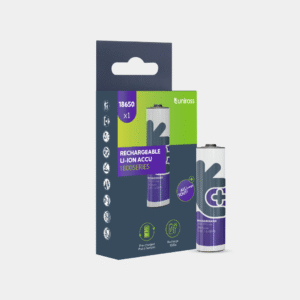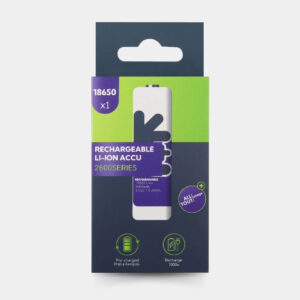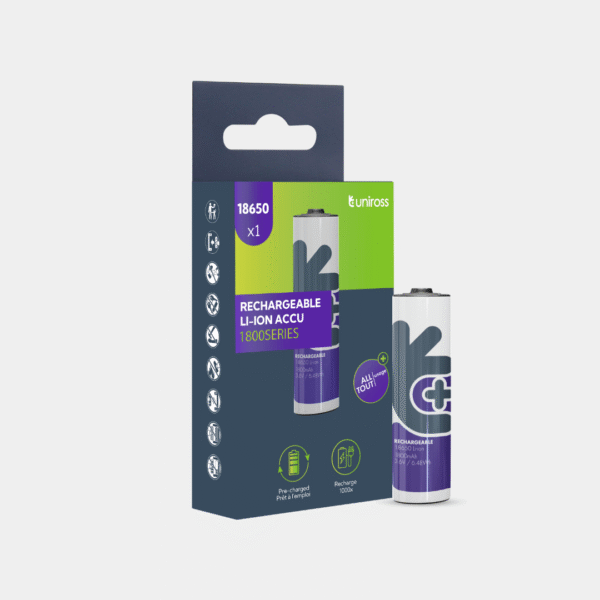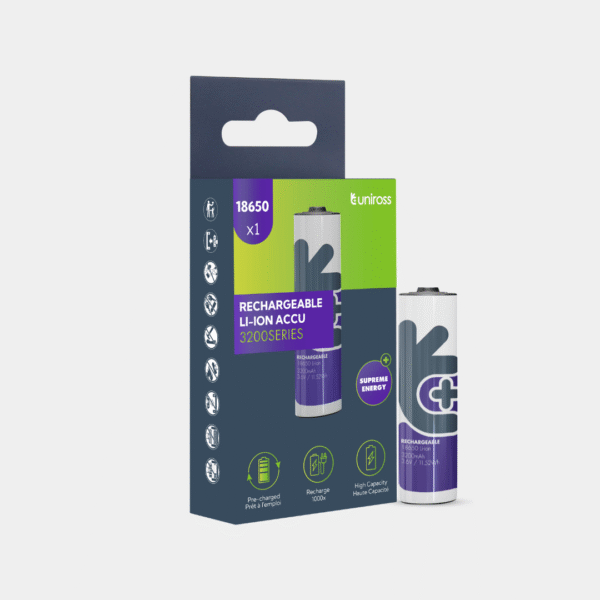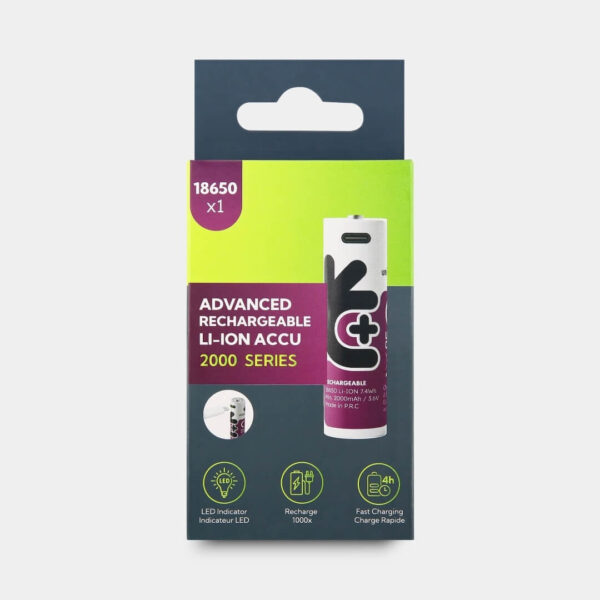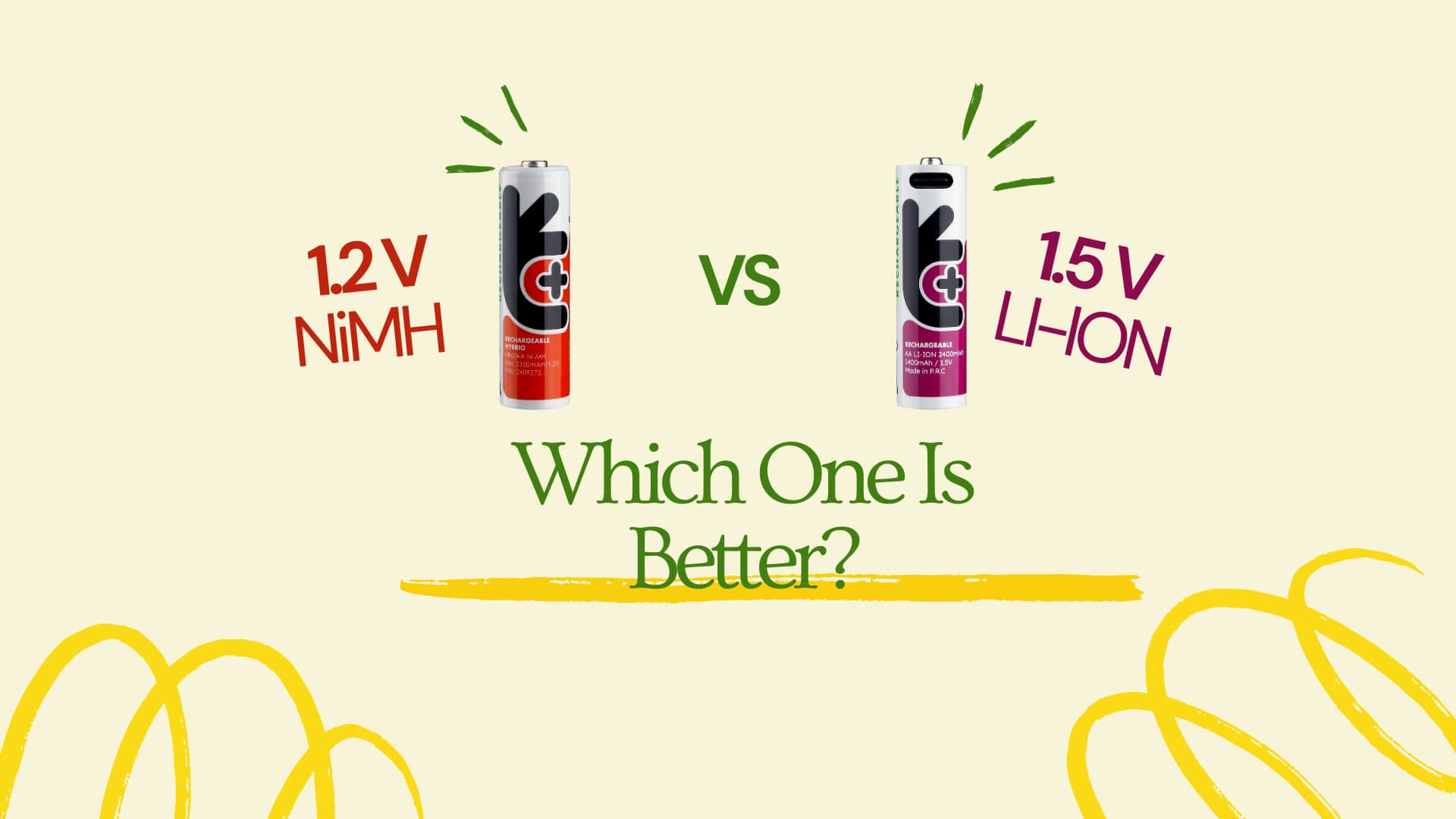18650 batteries have become the backbone of portable power, powering everything from flashlights to electric vehicles. These cylindrical lithium-ion cells pack a lot of energy into a small size, making them a favorite for both everyday users and advanced builders. This comprehensive guide covers all aspects of these versatile lithium-ion powerhouses, from their specifications and applications to safety guidelines and proper maintenance.
What Are 18650 Batteries?
18650 batteries are cylindrical lithium-ion rechargeable batteries, named for their dimensions: 18mm in diameter and 65mm in length (hence “18650”). With their high energy density and reliable performance, these powerful lithium-ion rechargeable cell have a nominal voltage of around 3.6–3.7 volts. These cells are used widely in devices requiring robust, sustainable power. Because they strike such a good balance between size and capacity, many gadgets, from flashlights and headlamps to e-bike packs are built around them.
Key Specifications
- Nominal Voltage: 3.6V-3.7V
- Maximum Charge Voltage: 4.2V
- Capacity Range: 2000mAh to 3500mAh
- Discharge Rate: Varies by type (high-drain vs. low-drain)
- Lifespan: 300-1000 charge cycles depending on chemistry and usage
- Operating Temperature: -20°C to 60°C (-4°F to 140°F)
What Makes 18650 Batteries Special?
18650 batteries offer an excellent balance between size, capacity, and performance. Their standardized form factor has enabled widespread adoption across industries, while continued advancements in lithium-ion chemistry have steadily improved their performance metrics. Their rechargeable nature makes them an economical and environmentally friendly power source compared to disposable batteries.
Types of 18650 Batteries
By Chemistry
1. Lithium-Ion (Li-ion)
The most common 18650 battery chemistry, offering high energy density and reliable performance.
Advantages:
- Higher energy density (longer runtime)
- Extended lifespan (300-500 cycles)
- Low self-discharge rate
Disadvantages:
- Safety concerns if damaged
- Higher initial cost
- Environmental impact if improperly disposed
2. Lithium Iron Phosphate (LiFePO4)
Known for enhanced safety and stability compared to standard Li-ion.
Advantages:
- Superior thermal and chemical stability
- Longer lifespan (1000+ cycles)
- Excellent performance at high temperatures
Disadvantages:
- Lower energy density (shorter runtime)
- Lower nominal voltage (3.2V vs 3.7V)
- Slightly slower charging
3. Lithium Polymer (LiPo)
Features a polymer electrolyte instead of the traditional liquid electrolyte.
Advantages:
- Flexible design options
- High energy density
- Lightweight construction
Disadvantages:
- More prone to swelling if overcharged
- Shorter lifespan compared to other lithium chemistries
- Complex charging requirements
4. Nickel-Metal Hydride (NiMH)
Less common in 18650 format but used in some applications.
Advantages:
- More environmentally friendly than older battery types
- Lower cost than lithium variants
- Good for low-drain applications
Disadvantages:
- Higher self-discharge rate
- Lower voltage output (1.2V)
- Less common in 18650 format
Uniross 18650 Lineup. What Sets Our Batteries Apart
At Uniross, our goal is to offer 18650 batteries that combine safety, performance, and convenience. Let’s dive into our product range:
- We offer models with capacities from 1800 mAh up to 3200 mAh, allowing users to pick exactly what fits their use case.
- For high-demand devices, our 3000 mAh and 3200 mAh high-capacity cells provide extended runtime without compromising on safety or reliability.
- We also offer a USB-C rechargeable 18650 — a cell with a built-in USB-C port, allowing direct charging via USB cable (no dedicated charger needed). Ideal for beginners or users wanting maximum convenience.
Every Uniross 18650 cell includes built-in protective features (overcharge, overdischarge protection) and is manufactured under stringent quality control. This ensures steady voltage delivery, consistent performance, and long-term reliability.
How to Choose the Right 18650 Battery (and Avoid Mistakes)
- If your priority is longer runtime, go for the 3000 mAh or 3200 mAh models. The higher the mAh, the more energy stored.
- For devices that draw high current, make sure the battery supports sufficient discharge current rating (amps). If not, the battery may sag or overheat.
- If you don’t own a dedicated charger or prefer simplicity, the USB-C rechargeable model is a smart pick — it reduces hassle and lowers the barrier for beginners.
- Start by checking your device specs or existing battery to confirm compatibility (size, voltage).
- Avoid mixing old and new batteries in one pack — this difference in age or capacity can lead to imbalance and reduced life.
Where 18650 Batteries Are Used
One of the reasons 18650 cells are so popular is their versatility across a wide range of devices:
- Flashlights, headlamps & tactical torches: Their compact size and high output make them ideal for high-brightness lighting.
- Cameras & lighting rigs: LED panels, flashes, and continuous light sources benefit from stable voltage over the discharge cycle.
- Portable electronics & power banks: Because 18650s can be combined in packs, they power laptops, chargers, and mobile gear.
- E-bikes, scooters & battery packs: Makers and manufacturers use many 18650s in series/parallel to build high-capacity battery packs for mobility and energy storage.
- DIY, robotics & maker projects: Hobbyists love them for experiments, custom battery packs, and electronics where reliability and energy density matter.
Across all these, the key attraction is the compact energy storage and rechargeability that 18650s offer.
Charging, Maintenance & Best Practices
A good battery is only as good as how you treat it. Follow these guidelines:
- Use a reliable charger matched to lithium-ion batteries. Don’t use cheap or unverified chargers that may overcharge or push unsafe currents.
- Charge at moderate current (e.g. 0.5C to 1C is common) rather than pushing the limits — this helps preserve cycle life.
- Never overdischarge; avoid running the voltage down too far. It’s safer to stop using the device before the battery is completely drained.
- If you’re storing batteries for a long time, store them at around 40–60% charge in a cool, dry place — not fully charged, not empty.
- Regularly check battery condition — if you see swelling, leakage, or major capacity drop, retire the cell responsibly.
- Avoid mixing different brands, capacities, or aged cells in the same device.
Safety Tips & Precautions
Safety is paramount when dealing with lithium-ion batteries. Here are essential precautions:
- Never short-circuit a battery — avoid contact of positive and negative terminals with metal.
- Don’t expose the battery to extreme heat, fire, or direct sunlight.
- If a cell becomes hot, emits odor, bulges, or leaks, stop using it immediately.
- Use protected cells (with built-in safety circuits) for extra peace of mind, especially for beginners.
- Dispose or recycle batteries properly — do not throw them in household trash.
FAQ About 18650 Batteries
Q: Are all 18650 batteries the same?
A: No. 18650 batteries differ by chemistry (Li-ion, LiFePO4, LiPo, NiMH), capacity (2000-3500mAh), and discharge rate (high-drain vs. low-drain). Always match your device’s requirements.
Q: What’s the difference between protected and unprotected 18650 batteries?
A: Protected batteries include a circuit board that prevents overcharging, over-discharging, and short circuits. Unprotected batteries lack these safety features and should only be used in devices with built-in protection circuits.
Q: How long do 18650 batteries last?
A: Most 18650 batteries last for 300-1000 charge cycles, depending on chemistry, usage patterns, and storage conditions. With proper care, they can maintain usable capacity for 3-5 years.
Q: Can I charge an 18650 battery with a phone charger?
A: No. Always use a dedicated 18650 battery charger with proper protection circuits. Phone chargers deliver power differently and lack the necessary safety features for lithium-ion batteries.
Q: What’s the difference between 18650 3.6V and 3.7V?
A: There’s essentially no difference. Manufacturers list either 3.6V or 3.7V as the nominal voltage, but they’re the same type of cell with identical charging parameters (maximum charge voltage of 4.2V).
Q: Are flat-top or button-top 18650 batteries better?
A: Neither is inherently better. Button-top batteries have a raised positive terminal and work better in some devices, while flat-top batteries are preferred for certain applications like custom battery packs.
Q: How do I know when to replace my 18650 battery?
A: Replace your 18650 battery when it shows significant capacity loss (below 70-80% of original capacity), takes much longer to charge, discharges quickly, or shows physical signs of damage like swelling.
Q: Is it safe to use 18650 batteries in homemade projects?
A: 18650 batteries can be used in DIY projects, but you must implement proper protection circuits, balance charging for multi-cell configurations, and appropriate thermal management. Without these safety measures, they can pose serious fire risks.


